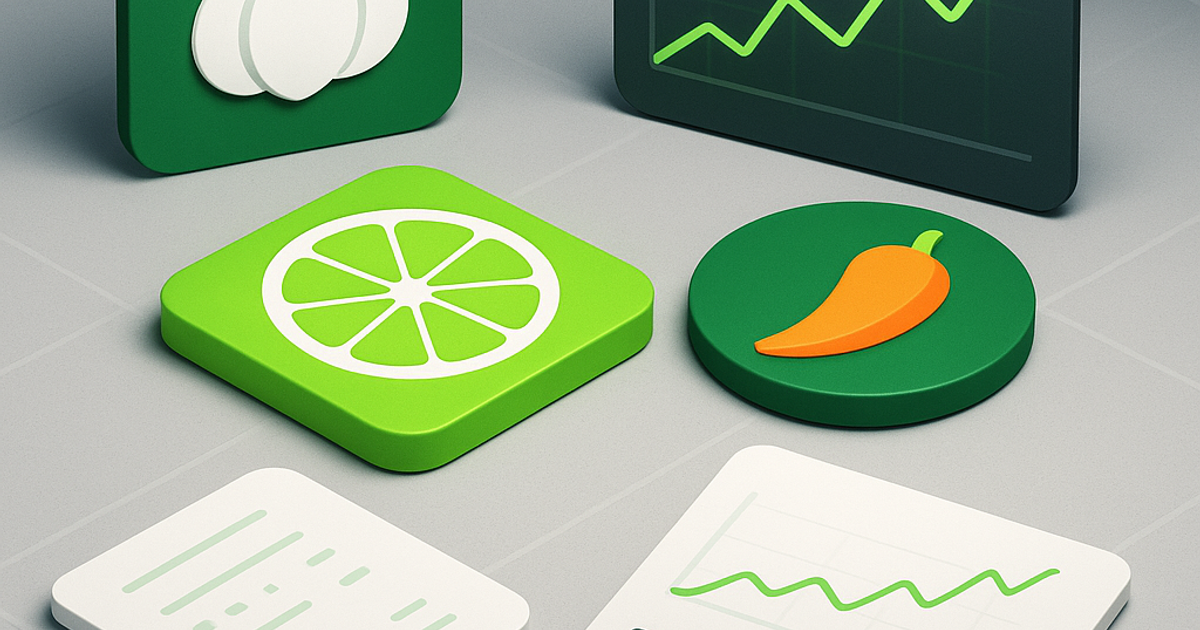What Are Food Trends? Why They Matter for Food and Beverage Brands
A food trend is not a vibe. It is a measurable shift in what people choose, buy, and ask for across menus, shelves, and feeds. When a trend is real, it shows up in purchase behavior, not just in commentary.
The reveal: trend signals are often clearer in supply chain data than in social buzz. By the time a trend is obvious on Instagram, demand has already moved.
By the end, you will know:
- what a food trend is (and what it is not)
- how trends move through the life cycle
- why trend tracking matters for procurement, R&D, and marketing
What a food trend is
A food trend is an ingredient, format, or flavor profile gaining momentum across retail and foodservice. The signal shows up in repeat purchase, menu placement, and the speed at which competitors mimic the idea.
It is not:
- a one-week spike
- a niche culinary experiment
- a marketing campaign without demand pull
Why trend tracking powers a smarter supply chain
Trend intelligence turns planning from reactive to strategic. The biggest cost in food is not just stockouts; it is mis-timed commitments.
- Demand forecasting: viral demand can empty warehouses overnight. Trend monitoring lets procurement lock supply earlier and reduce expediting costs.
- Sourcing decisions: niche ingredients need new supplier qualification and lead-time planning. Early visibility protects continuity.
- Waste reduction: knowing when a trend is fading prevents over-ordering and markdowns that erode margin.
Why product developers cannot ignore trends
Trend data sharpens innovation choices. It tells you which ideas deserve the lab and which should stay on the whiteboard.
- Faster innovation cycles: align R&D with rising demand to launch ahead of competitors.
- Resource prioritization: pick which prototypes deserve pilot time and which can wait.
- Category defense: when a trend goes mainstream, the cost of inaction rises and price pressure follows.
Reading the trend life cycle (and why timing matters)
Trends move through three stages. The goal is not to chase every signal, but to enter at the right moment for your business.
- Growing trend: early signals, usually chef-driven or niche. Best for LTOs and pilots.
- Going mainstream: adoption accelerates and national chains start to copy. This is the scale window.
- Available everywhere: the trend becomes table stakes. Differentiation shifts to price, quality, or the next signal.
For a current example of a category where signals are shifting quickly, see our analysis of plant-based alternative milks in the U.S.: https://www.saucery.ai/plant-based-alternative-milks-united-states-2026/
Knowing the stage answers different questions by team:
- Procurement: commit to long-term supply or stay on spot buys?
- Operations: retrofit lines now or wait for proof?
- Marketing: sell novelty or position as a familiar staple?
Technology makes trend insight faster (and cheaper)
Traditional research can take months. AI-driven platforms like Saucery.ai deliver validated trend insight in hours by simulating large-scale consumer responses. That speed changes how teams plan and how quickly they can correct course.
That speed lets you:
- run what-if tests before committing capital
- benchmark your portfolio against live sentiment
- align supply chain forecasts with near-term demand signals
- detect early decay before a trend turns into excess inventory
Key takeaways
- Food trends are leading indicators of demand. Early recognition beats reactive planning.
- Life cycle timing matters. Early adoption wins margin; late adoption risks commoditization.
- AI compresses the timeline. Insight in hours beats insight in months.
Ready to act on tomorrow’s trends?
Join Saucery.ai’s Early Adopters Program to validate ideas, forecast demand, and launch winning products before competitors do. Apply here: https://www.saucery.ai/early-adoption/
